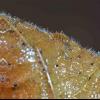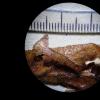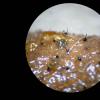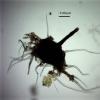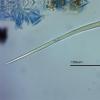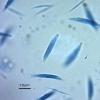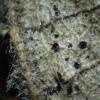
18-12-2025 21:17
Pol DebaenstThe identification took me to Byssonectria deformi

15-12-2025 07:09
 Danny Newman
Danny Newman
indet. Rutstroemiaceae sp. on unk. fallen leavesMc

19-12-2025 10:10
Patrice TANCHAUDBonjour, récolte réalisée en milieu dunaire, a

18-12-2025 17:23
 Bruno Coué
Bruno Coué
Bonjour,je serais heureux d'avoir votre avis sur c

18-12-2025 18:07
Margot en Geert VullingsThese plumes were found on rotten wood.They strong

17-12-2025 18:35
 Michel Hairaud
Michel Hairaud
Bonjour à tous/Hi to everyone I am passing along

15-12-2025 15:48
 Danny Newman
Danny Newman
Melanospora cf. lagenaria on old, rotting, fallen

15-12-2025 15:54
 Johan Boonefaes
Johan Boonefaes
Unknown anamorph found on the ground in coastal sa

15-12-2025 21:11
 Hardware Tony
Hardware Tony
Small clavate hairs, negative croziers and IKI bb
this was found in the same place as the Orbilia, on the remains of a dead leaf by a stream. Oak, Sycamore and Hazel were present. The fruit bodies were on both sides of the leaf, and after soaking in water were up to 0.3 mm diameter. They were hardly immersed, rather attached by tiny "rhizoids", upo to 0.5 mmm long. The neck was between 0.25 and 0.35 long. What I assumed to be spores were in fact asci, containing very thin spores up to 25 x 1.5 um. I suspect this is Gnomonia gnomon, but my microscope is unable to show convincingly a central septum in the spores, nor appendages at the ends. Could this be anything else?
Many thanks if this find could be confirmed,
Steve

Chris
Gnomonia alni-viridis 7
Gnomonia cerastis 6
Gnomonia leptostyla 2
Most of these are on Acer.
(Most of these are also yours Chris)
Many thanks Chris and Paul
Dear Steve,
As Paulm said, you'll have to go in Sogonov & al., and then in more recent works. The three taxa Gnomonia alni-viridis Gnomonia cerastis Gnomonia leptostyla aren't used yet today.
Alain
It's hard to know what to do with all the "old" records - we don't really know what many of them would be named as nowadays.
Les petits champignons! Les noms, ils se change si vite!
Steve

the leaf looks like of type of a hazel. Ascus's morphology (apical annulus is ca 1 micrometre), 27-31 x 4.6-6 micrones, spore 20 x 1.5 micr fits well in the description of Monod (1983: 85).
Important: Check the perithecia, if they collapse circular when the leaf is in dry condition, typical depression is noted by also by the author.

